-
 Bitcoin
Bitcoin $79,012.1761
-4.78% -
 Ethereum
Ethereum $1,570.4026
-12.09% -
 Tether USDt
Tether USDt $0.9994
-0.02% -
 XRP
XRP $1.9666
-7.46% -
 BNB
BNB $555.4328
-6.02% -
 USDC
USDC $0.9999
-0.01% -
 Solana
Solana $107.5201
-9.67% -
 Dogecoin
Dogecoin $0.1506
-10.27% -
 TRON
TRON $0.2315
-2.62% -
 Cardano
Cardano $0.5814
-10.27% -
 UNUS SED LEO
UNUS SED LEO $8.8602
-2.17% -
 Chainlink
Chainlink $11.3795
-10.04% -
 Toncoin
Toncoin $3.0063
-7.92% -
 Stellar
Stellar $0.2370
-5.38% -
 Avalanche
Avalanche $16.1395
-9.48% -
 Shiba Inu
Shiba Inu $0.0...01134
-7.55% -
 Sui
Sui $1.9135
-13.06% -
 Hedera
Hedera $0.1425
-11.59% -
 Polkadot
Polkadot $3.7145
-5.76% -
 MANTRA
MANTRA $5.9824
-4.31% -
 Bitcoin Cash
Bitcoin Cash $272.1059
-9.40% -
 Litecoin
Litecoin $71.2279
-13.11% -
 Dai
Dai $1.0000
-0.02% -
 Ethena USDe
Ethena USDe $0.9987
-0.05% -
 Bitget Token
Bitget Token $4.1866
-5.67% -
 Pi
Pi $0.5915
4.23% -
 Monero
Monero $200.3568
-5.71% -
 Hyperliquid
Hyperliquid $10.5427
-10.74% -
 Uniswap
Uniswap $5.1188
-11.73% -
 OKB
OKB $50.3711
-2.37%
How do NFTs work through blockchain?
NFTs are unique digital assets on blockchain, enabling secure ownership and trading through smart contracts, despite challenges like environmental impact and scalability.
Apr 04, 2025 at 11:43 pm
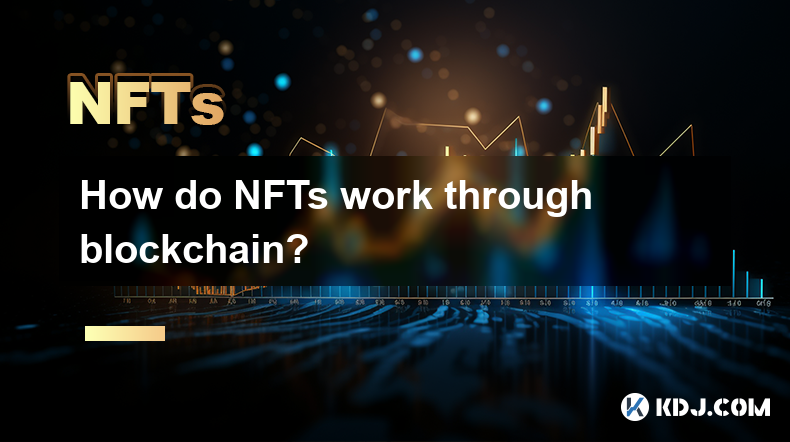
Non-fungible tokens (NFTs) have become a significant part of the cryptocurrency and blockchain world, captivating artists, collectors, and investors alike. But how do NFTs work through blockchain technology? Let's delve into the intricacies of NFTs and their relationship with blockchain to better understand this revolutionary digital asset.
At its core, an NFT is a unique digital asset that represents ownership of a specific item or piece of content, such as artwork, music, or even tweets. Unlike cryptocurrencies like Bitcoin or Ethereum, which are fungible and can be exchanged on a one-to-one basis, NFTs are indivisible and cannot be replicated. This uniqueness is what makes NFTs so valuable and sought after in the digital realm.
The blockchain is the underlying technology that enables the creation, management, and trading of NFTs. It serves as a decentralized, immutable ledger that records all transactions and ownership details related to an NFT. The most commonly used blockchain for NFTs is Ethereum, but other blockchains like Binance Smart Chain, Flow, and Tezos are also gaining popularity.
The Process of Creating an NFT
Creating an NFT involves several steps, which can be broken down as follows:
Choosing a Blockchain: The first step is to select the blockchain on which the NFT will be created. Ethereum is the most popular choice due to its established infrastructure and wide adoption, but other blockchains offer different advantages, such as lower transaction fees or faster processing times.
Selecting an NFT Standard: Depending on the chosen blockchain, there are specific standards for creating NFTs. For instance, on Ethereum, the ERC-721 and ERC-1155 standards are widely used. These standards define how NFTs are created, managed, and transferred.
Minting the NFT: Minting is the process of creating the NFT on the blockchain. This involves uploading the digital asset to a platform or marketplace that supports NFT creation, such as OpenSea or Rarible. The creator then pays a gas fee to execute the transaction and officially mint the NFT on the blockchain.
Setting Metadata: Metadata is crucial for NFTs as it contains all the information about the asset, such as its title, description, and any other relevant details. This metadata is stored on the blockchain and can be accessed by anyone to verify the NFT's authenticity and ownership.
How NFTs Are Traded on the Blockchain
Once an NFT is minted, it can be bought, sold, or traded on various NFT marketplaces. The process of trading NFTs on the blockchain involves several key aspects:
Listing the NFT: The owner of an NFT can list it for sale on a marketplace. They set a price and any other conditions for the sale, such as an auction or a fixed price.
Executing the Transaction: When a buyer agrees to purchase the NFT, the transaction is executed on the blockchain. This involves transferring the ownership of the NFT from the seller to the buyer, and the payment is usually made in cryptocurrency, such as Ethereum.
Recording the Transaction: Every transaction involving an NFT is recorded on the blockchain, ensuring transparency and immutability. This means that the history of ownership and any changes to the NFT can be traced back to its origin.
Royalties: One of the unique features of NFTs is the ability to set royalties for the creator. This means that every time the NFT is sold in the future, the original creator receives a percentage of the sale price, providing ongoing income from their work.
The Role of Smart Contracts in NFTs
Smart contracts play a vital role in the functionality of NFTs on the blockchain. These are self-executing contracts with the terms of the agreement directly written into code. They automate the process of creating, managing, and trading NFTs, ensuring that all transactions are executed as intended.
Creation and Minting: Smart contracts are used to mint new NFTs on the blockchain. They define the rules for creating the NFT, including the metadata and any other conditions set by the creator.
Ownership and Transfer: Smart contracts manage the ownership and transfer of NFTs. When an NFT is sold, the smart contract automatically updates the ownership details on the blockchain, ensuring that the new owner is recorded accurately.
Royalties and Payments: Smart contracts also handle the distribution of royalties to the original creator of the NFT. Whenever the NFT is sold, the smart contract ensures that the agreed-upon percentage is sent to the creator's wallet.
Security and Trust: By using smart contracts, the integrity and security of NFT transactions are maintained. Since the code is executed automatically and cannot be altered, all parties can trust that the transactions will be carried out as agreed.
The Benefits of Using Blockchain for NFTs
The use of blockchain technology offers several benefits for NFTs, making them a powerful tool for digital ownership and trading.
Immutable Ownership: The blockchain provides a tamper-proof record of ownership for NFTs. Once an NFT is minted and its ownership is recorded, it cannot be altered or deleted, ensuring that the ownership remains secure and verifiable.
Transparency: All transactions involving NFTs are recorded on the blockchain, making them transparent and accessible to anyone. This transparency helps build trust among buyers and sellers, as they can verify the authenticity and history of the NFT.
Interoperability: NFTs created on one blockchain can often be transferred to another, allowing for greater flexibility and interoperability. This means that NFT owners can move their assets between different platforms and ecosystems, enhancing their usability and value.
Decentralization: The decentralized nature of blockchain technology means that no single entity controls the creation or trading of NFTs. This decentralization empowers creators and collectors, giving them more control over their digital assets.
Challenges and Considerations
While the use of blockchain for NFTs offers many benefits, there are also challenges and considerations that need to be addressed.
Environmental Impact: The energy consumption associated with blockchain transactions, particularly on the Ethereum network, has raised concerns about the environmental impact of NFTs. Efforts are being made to transition to more eco-friendly blockchain solutions, such as Ethereum 2.0, which aims to reduce energy consumption significantly.
Scalability: As the popularity of NFTs grows, scalability becomes a critical issue. High transaction fees and slow processing times can hinder the user experience and limit the adoption of NFTs. Different blockchains are working on solutions to improve scalability, such as layer-2 scaling solutions.
Regulatory Uncertainty: The regulatory landscape for NFTs is still evolving, with different countries taking varied approaches to their regulation. This uncertainty can pose challenges for creators and investors, who need to navigate the legal and tax implications of buying, selling, and owning NFTs.
Fraud and Scams: The NFT market has seen its share of fraud and scams, with counterfeit NFTs and phishing attacks posing risks to buyers and sellers. It's essential for participants in the NFT market to conduct due diligence and use reputable platforms to minimize these risks.
The Future of NFTs and Blockchain
The integration of NFTs with blockchain technology is still in its early stages, and the future holds exciting possibilities. As the technology evolves, we can expect to see more innovative uses for NFTs and improvements in the underlying blockchain infrastructure.
New Use Cases: Beyond art and collectibles, NFTs are being explored for use in gaming, virtual real estate, and even identity verification. These new use cases could expand the market for NFTs and attract a broader audience.
Improved Technology: Advances in blockchain technology, such as the transition to Ethereum 2.0 and the development of more scalable and eco-friendly blockchains, will enhance the functionality and appeal of NFTs.
Mainstream Adoption: As awareness and understanding of NFTs grow, we can expect to see more mainstream adoption. This could lead to greater liquidity and value for NFTs, as well as more opportunities for creators and investors.
Interoperability and Integration: The ability to move NFTs between different blockchains and integrate them with other digital assets and platforms will enhance their utility and value. This interoperability could lead to more complex and interconnected digital ecosystems.
Common Questions Related to NFTs and Blockchain
Q: What is an NFT, and how is it different from a cryptocurrency?
A: An NFT, or non-fungible token, is a unique digital asset that represents ownership of a specific item or piece of content. Unlike cryptocurrencies like Bitcoin or Ethereum, which are fungible and can be exchanged on a one-to-one basis, NFTs are indivisible and cannot be replicated. This uniqueness is what makes NFTs valuable and sought after in the digital realm.
Q: How does blockchain technology enable the creation and trading of NFTs?
A: Blockchain technology serves as a decentralized, immutable ledger that records all transactions and ownership details related to an NFT. When an NFT is created, or minted, it is recorded on the blockchain, ensuring its uniqueness and authenticity. When an NFT is traded, the transaction is also recorded on the blockchain, updating the ownership details and ensuring transparency and security.
Q: What role do smart contracts play in the functionality of NFTs?
A: Smart contracts are self-executing contracts with the terms of the agreement directly written into code. They automate the process of creating, managing, and trading NFTs, ensuring that all transactions are executed as intended. Smart contracts handle the minting of new NFTs, the transfer of ownership, the distribution of royalties, and the overall security and trust of NFT transactions.
Q: What are some of the benefits of using blockchain for NFTs?
A: The use of blockchain for NFTs offers several benefits, including immutable ownership, transparency, interoperability, and decentralization. The blockchain provides a tamper-proof record of ownership, making it secure and verifiable. All transactions are transparent and accessible, building trust among buyers and sellers. NFTs can often be transferred between different blockchains, enhancing their usability and value. The decentralized nature of blockchain empowers creators and collectors, giving them more control over their digital assets.
Q: What are some of the challenges and considerations associated with NFTs and blockchain?
A: Some of the challenges and considerations include the environmental impact of blockchain transactions, scalability issues, regulatory uncertainty, and the risk of fraud and scams. The energy consumption associated with blockchain transactions has raised concerns about the environmental impact of NFTs. Scalability issues, such as high transaction fees and slow processing times, can hinder the user experience. The regulatory landscape for NFTs is still evolving, posing challenges for creators and investors. The NFT market has seen its share of fraud and scams, requiring participants to conduct due diligence and use reputable platforms.
Q: What does the future hold for NFTs and blockchain technology?
A: The future of NFTs and blockchain technology is promising, with new use cases, improved technology, mainstream adoption, and greater interoperability on the horizon. NFTs are being explored for use in gaming, virtual real estate, and identity verification, expanding their market and appeal. Advances in blockchain technology, such as Ethereum 2.0, will enhance the functionality and appeal of NFTs. As awareness and understanding of NFTs grow, we can expect to see more mainstream adoption, leading to greater liquidity and value. The ability to move NFTs between different blockchains and integrate them with other digital assets and platforms will enhance their utility and value, leading to more complex and interconnected digital ecosystems.
Disclaimer:info@kdj.com
The information provided is not trading advice. kdj.com does not assume any responsibility for any investments made based on the information provided in this article. Cryptocurrencies are highly volatile and it is highly recommended that you invest with caution after thorough research!
If you believe that the content used on this website infringes your copyright, please contact us immediately (info@kdj.com) and we will delete it promptly.
- Pepe (PEPE) Weekly Performance Hints At Huge Surge
- 2025-04-07 04:15:13
- XRP Price Tanks 12.8% This Week — More Pain to Come?
- 2025-04-07 04:15:13
- XRP's Funding Rate Has Dropped to Negative 0.012%, a Level Last Seen When the Asset Traded Near $0.33
- 2025-04-07 04:10:13
- A major supply event is coming for the SUI token
- 2025-04-07 04:10:13
- Memecoin DEX PumpSwap Makes a Significant Impact, Attracting 700K Wallets and Facilitating 30M Swaps
- 2025-04-07 04:05:12
- Ronin Network (RON) Has Retraced Heavily This Year
- 2025-04-07 04:05:12
Related knowledge
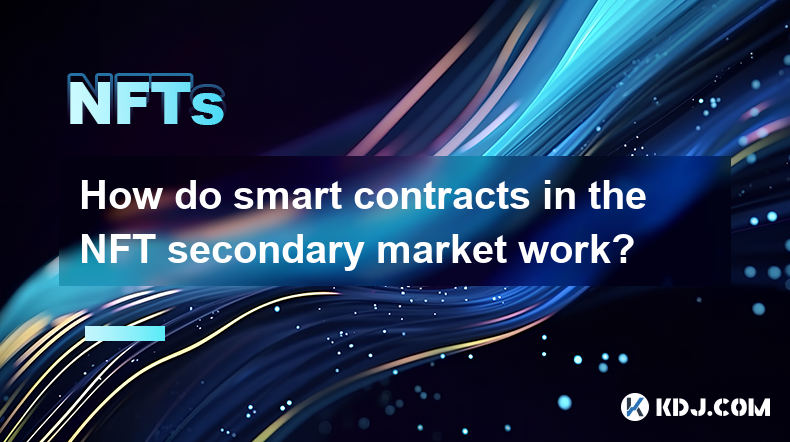
How do smart contracts in the NFT secondary market work?
Apr 03,2025 at 07:14am
Smart contracts play a pivotal role in the NFT secondary market, facilitating seamless transactions and enforcing predefined rules. These self-executing contracts with the terms of the agreement directly written into code are stored on the blockchain. In the context of NFTs, smart contracts automate the buying, selling, and transferring of digital asset...
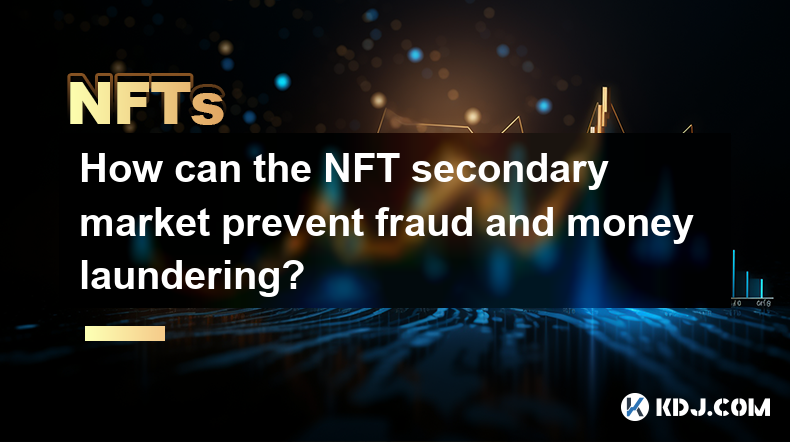
How can the NFT secondary market prevent fraud and money laundering?
Apr 03,2025 at 08:35am
The NFT secondary market has become a thriving hub for digital art and collectibles, but it also faces challenges in preventing fraud and money laundering. To tackle these issues, the market can implement various strategies and technologies to ensure a safer and more transparent trading environment. This article will explore how the NFT secondary market...

How are transaction fees in the NFT secondary market calculated?
Apr 04,2025 at 05:28am
The calculation of transaction fees in the NFT secondary market is a crucial aspect that both buyers and sellers need to understand. These fees can significantly impact the overall cost of transactions and the profits that sellers can make. In this article, we will delve into the various components that make up these fees, how they are calculated, and w...
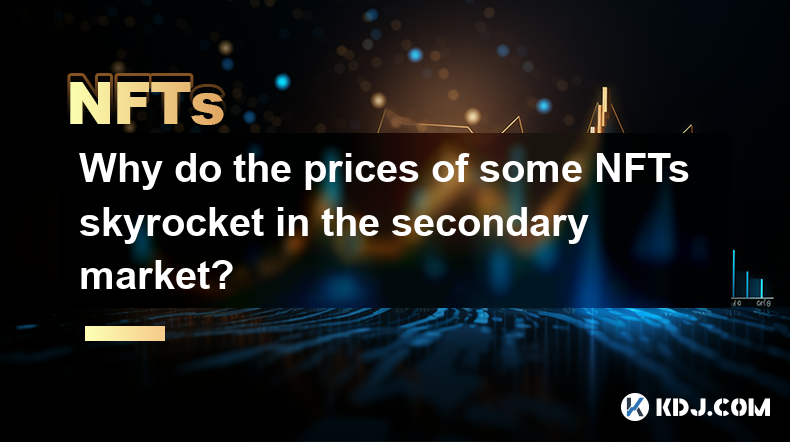
Why do the prices of some NFTs skyrocket in the secondary market?
Apr 06,2025 at 07:08am
The phenomenon of NFT prices skyrocketing in the secondary market is a fascinating aspect of the cryptocurrency and digital art world. Non-Fungible Tokens (NFTs) have taken the digital world by storm, and their value can surge dramatically after initial sales. Several factors contribute to this price surge, including rarity, demand, speculation, and the...
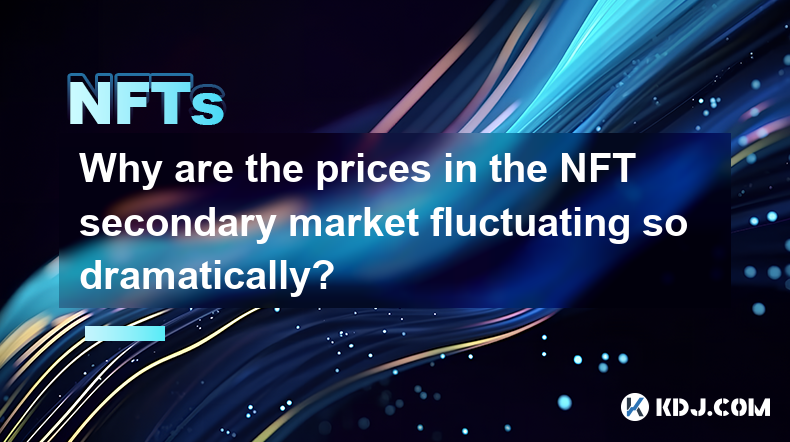
Why are the prices in the NFT secondary market fluctuating so dramatically?
Apr 03,2025 at 10:35pm
The NFT secondary market has been experiencing dramatic price fluctuations, leaving many in the cryptocurrency community puzzled and curious. To understand this phenomenon, it's essential to delve into the factors driving these price movements. From the impact of market sentiment and celebrity endorsements to the role of speculation and the unique natur...
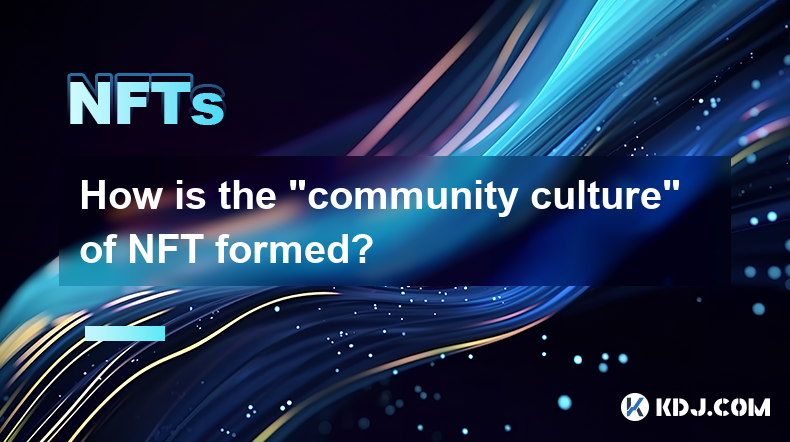
How is the “community culture” of NFT formed?
Apr 03,2025 at 11:07am
The formation of the 'community culture' within the NFT (Non-Fungible Token) space is a fascinating and multi-faceted process. It involves various elements such as shared interests, active engagement, and the creation of a sense of belonging among members. NFT communities often revolve around specific projects or artists, fostering a unique environment ...

How do smart contracts in the NFT secondary market work?
Apr 03,2025 at 07:14am
Smart contracts play a pivotal role in the NFT secondary market, facilitating seamless transactions and enforcing predefined rules. These self-executing contracts with the terms of the agreement directly written into code are stored on the blockchain. In the context of NFTs, smart contracts automate the buying, selling, and transferring of digital asset...

How can the NFT secondary market prevent fraud and money laundering?
Apr 03,2025 at 08:35am
The NFT secondary market has become a thriving hub for digital art and collectibles, but it also faces challenges in preventing fraud and money laundering. To tackle these issues, the market can implement various strategies and technologies to ensure a safer and more transparent trading environment. This article will explore how the NFT secondary market...

How are transaction fees in the NFT secondary market calculated?
Apr 04,2025 at 05:28am
The calculation of transaction fees in the NFT secondary market is a crucial aspect that both buyers and sellers need to understand. These fees can significantly impact the overall cost of transactions and the profits that sellers can make. In this article, we will delve into the various components that make up these fees, how they are calculated, and w...

Why do the prices of some NFTs skyrocket in the secondary market?
Apr 06,2025 at 07:08am
The phenomenon of NFT prices skyrocketing in the secondary market is a fascinating aspect of the cryptocurrency and digital art world. Non-Fungible Tokens (NFTs) have taken the digital world by storm, and their value can surge dramatically after initial sales. Several factors contribute to this price surge, including rarity, demand, speculation, and the...

Why are the prices in the NFT secondary market fluctuating so dramatically?
Apr 03,2025 at 10:35pm
The NFT secondary market has been experiencing dramatic price fluctuations, leaving many in the cryptocurrency community puzzled and curious. To understand this phenomenon, it's essential to delve into the factors driving these price movements. From the impact of market sentiment and celebrity endorsements to the role of speculation and the unique natur...

How is the “community culture” of NFT formed?
Apr 03,2025 at 11:07am
The formation of the 'community culture' within the NFT (Non-Fungible Token) space is a fascinating and multi-faceted process. It involves various elements such as shared interests, active engagement, and the creation of a sense of belonging among members. NFT communities often revolve around specific projects or artists, fostering a unique environment ...
See all articles





















































































